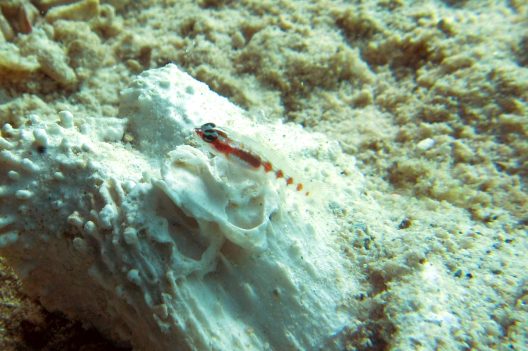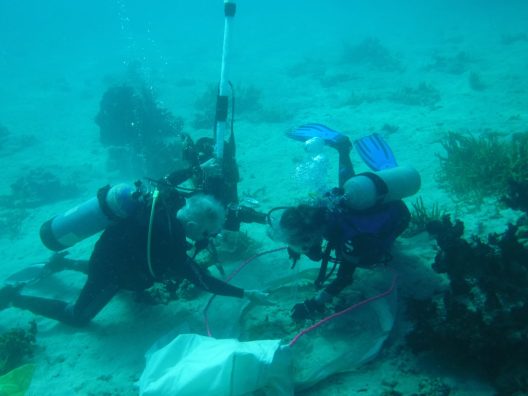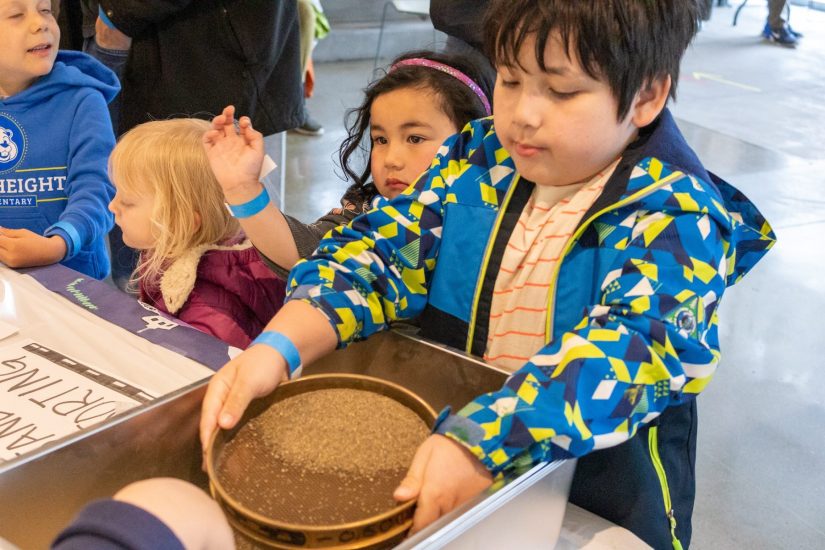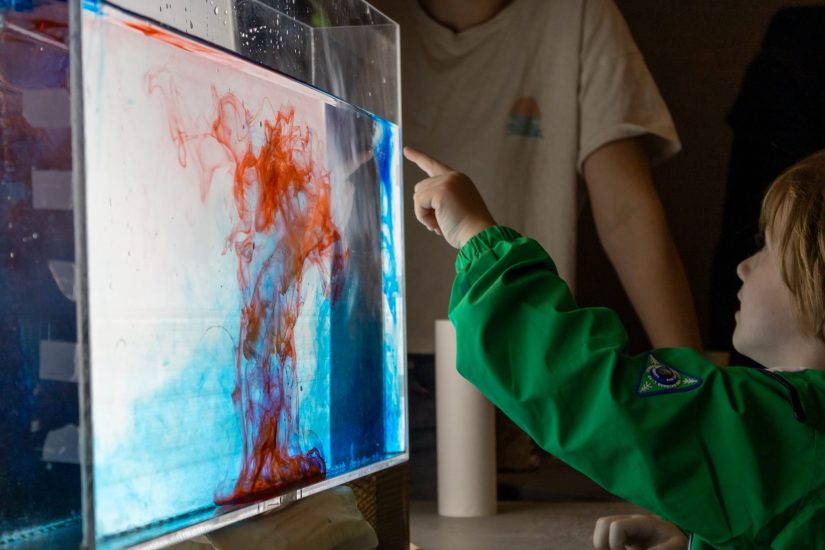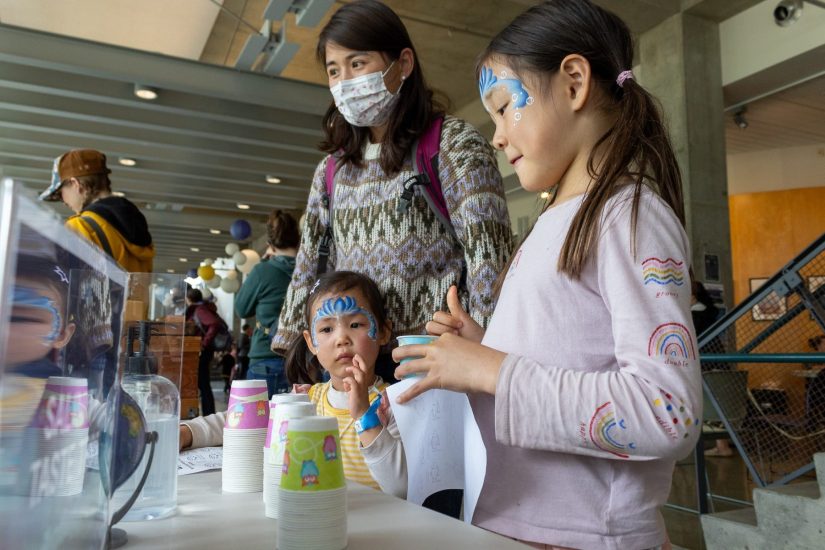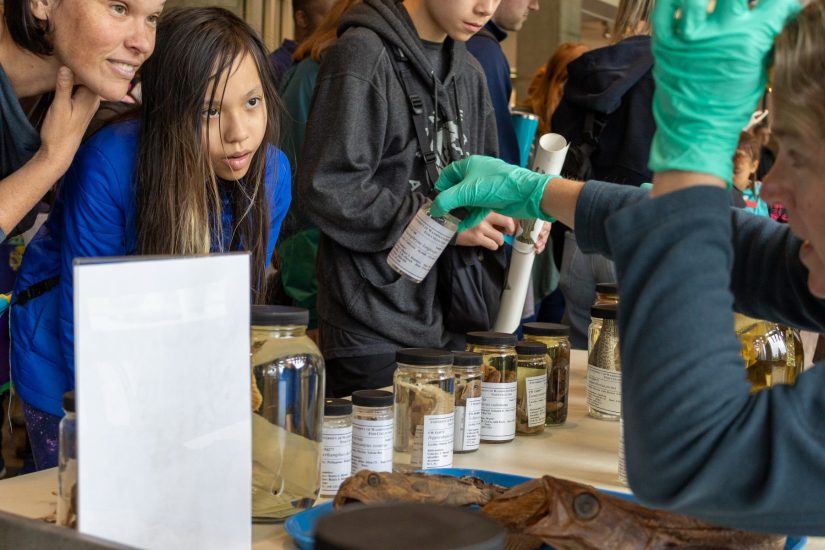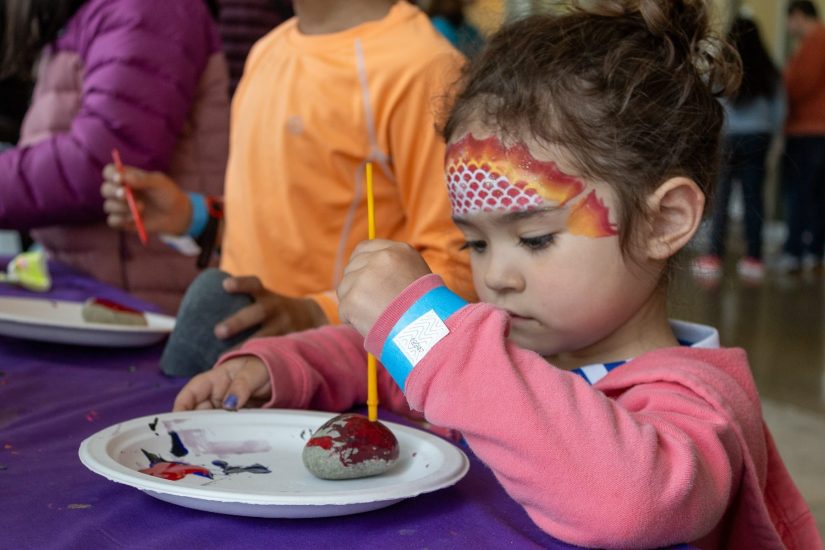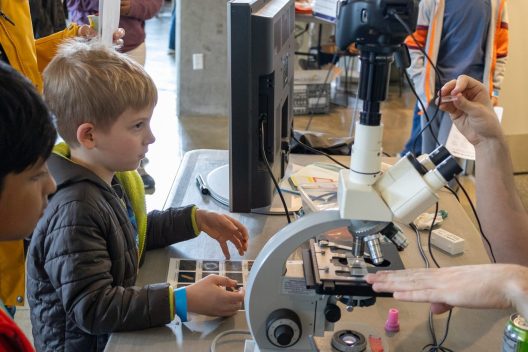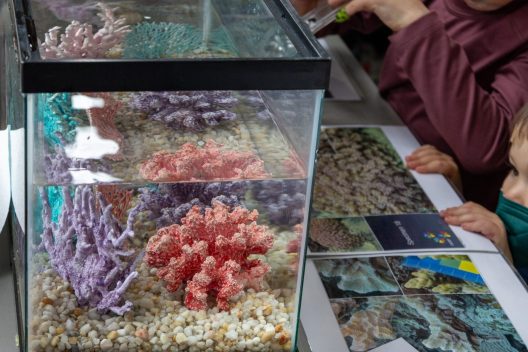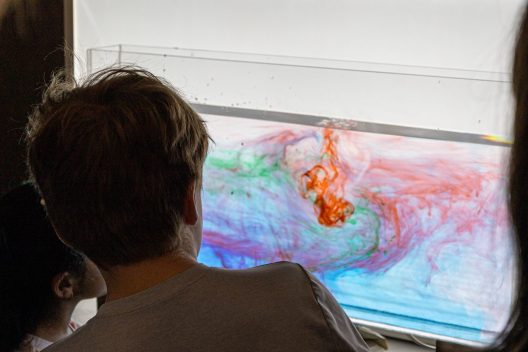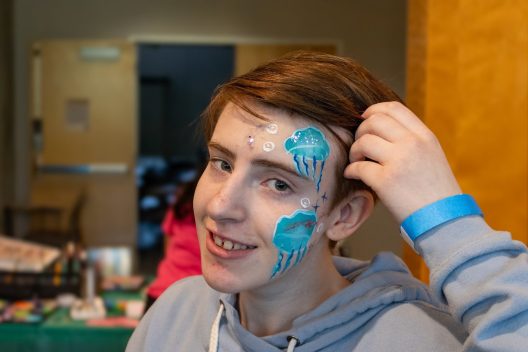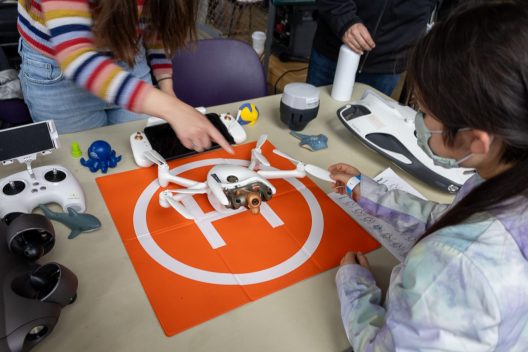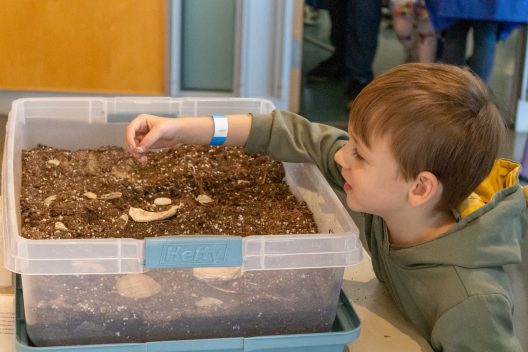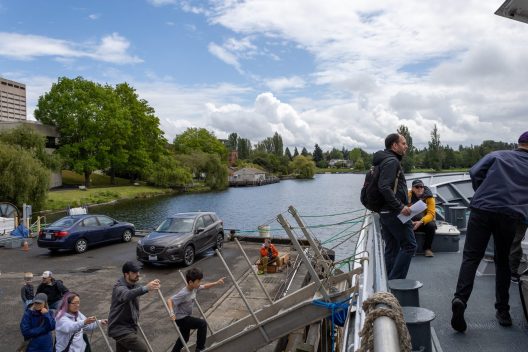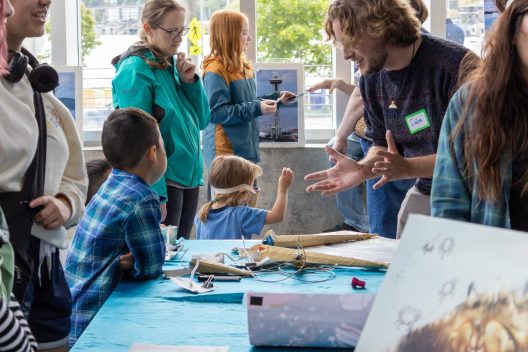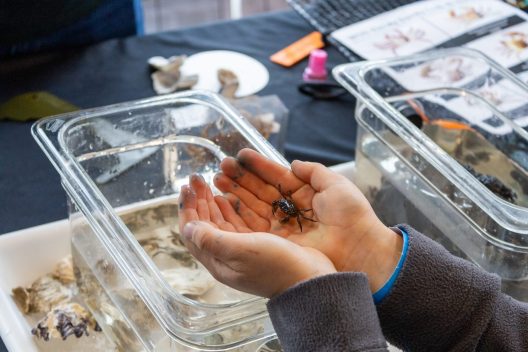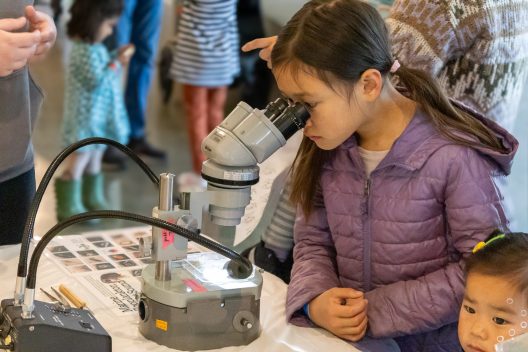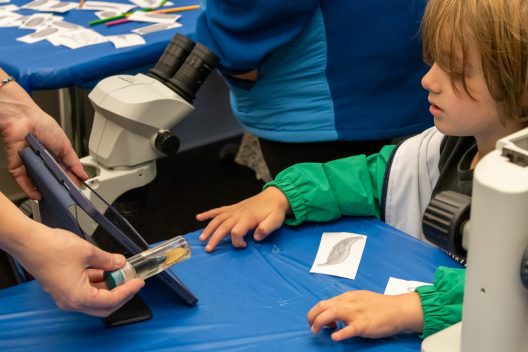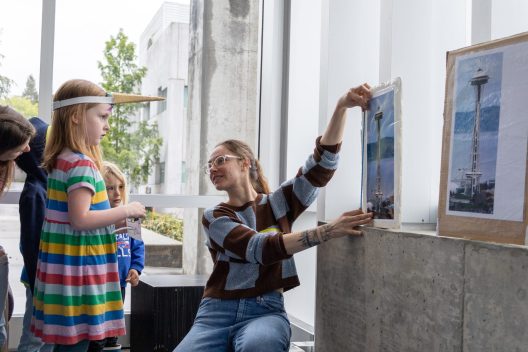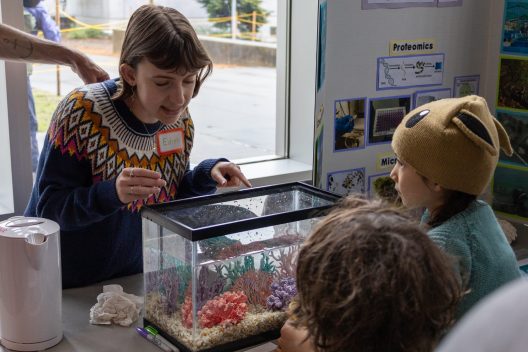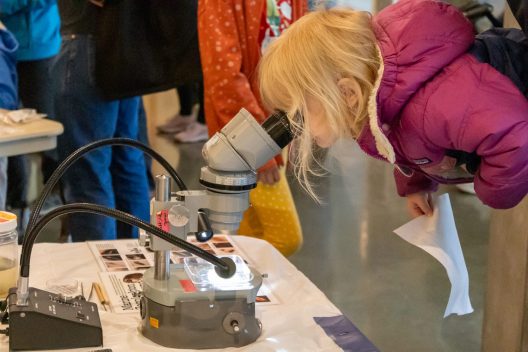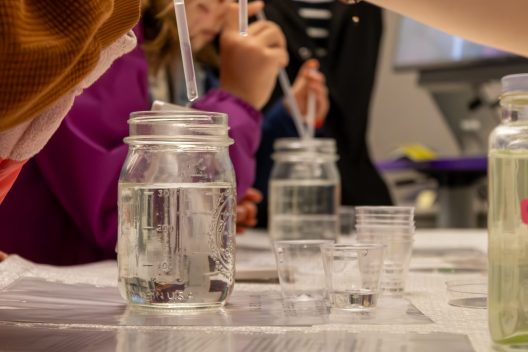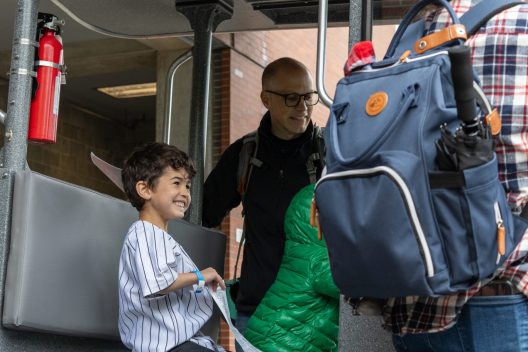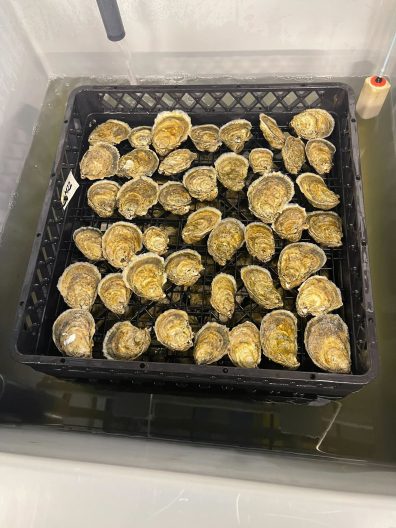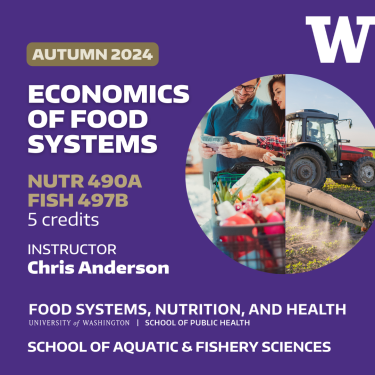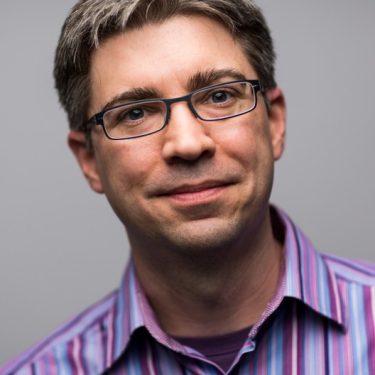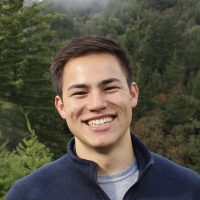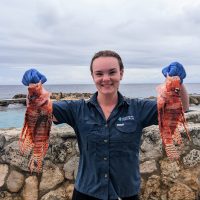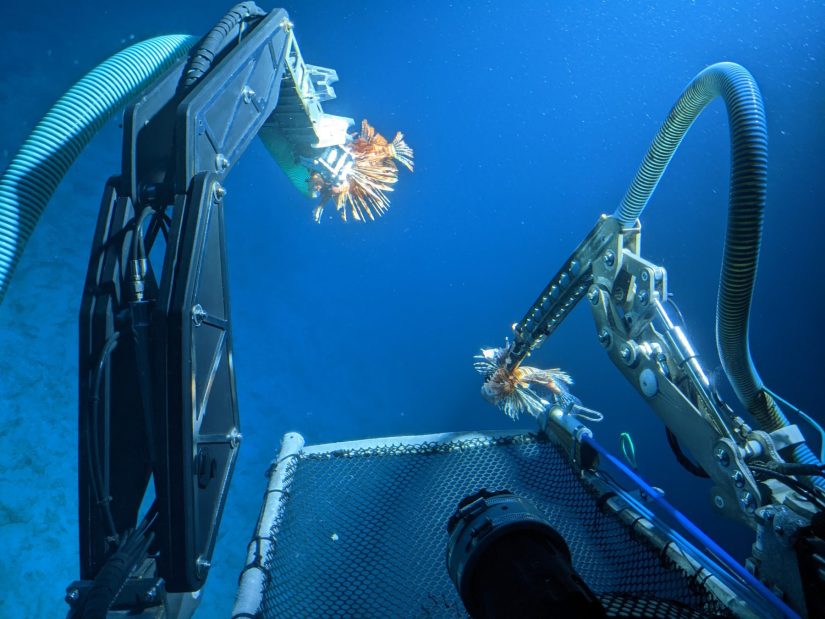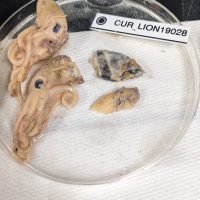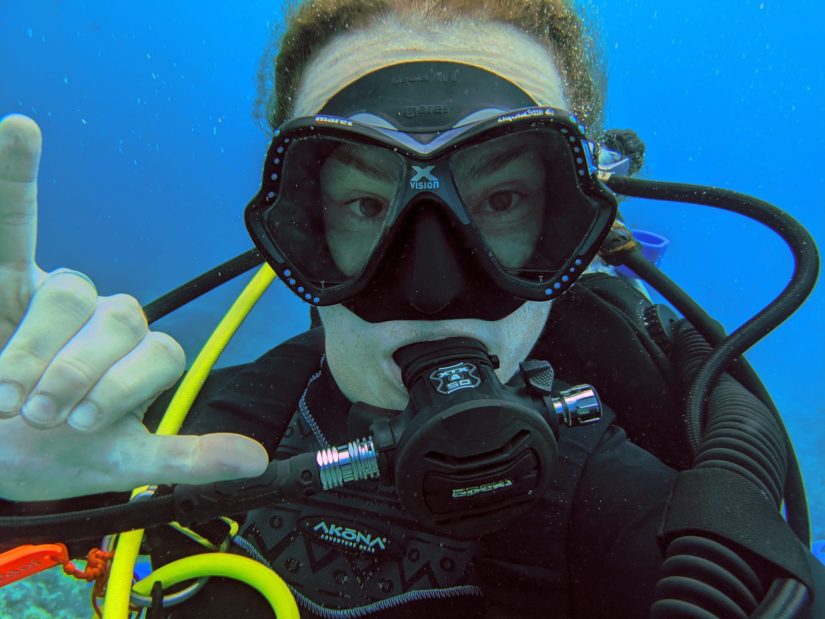Swimming around tropical coral reefs in a colorful array are an ever-changing multitude of fishes, some in schools of hundreds, others in pairs, and ones that prefer their own company. These are the fishes divers see on a heathy coral reef, but they are often only half of the diversity found in the reef’s fishes. The “hidden half” are the cryptobenthic fishes. So-called for their habit of camouflaging and hiding away in reefs and on the seafloor, cryptobenthic fishes, such as gobies, blennies, and cardinalfishes, are a fundamental part of thriving coral reef ecosystems around the globe. The gobies in this group are the focus of Marta Gómez-Buckley’s PhD research at SAFS.

“Cryptobenthic fishes are very small and are normally overlooked whenever surveys are done on coral reefs,” Marta shared. And most are so small that you could fit hundreds in your hands. “These fishes are often only as big as 2cm when adults, so they’re extremely tiny compared to most fishes, but they play a big role as a prey resource. In the first chapter of my dissertation, I investigated new techniques to collect such small specimens.” Marta is conducting her work in the Vava’u Archipelago, Kingdom of Tonga, a collection 41 islands in the more than 170 islands in the Tongan Group in Polynesia. Marta studied and collected cryptobenthic reef fishes in several areas around Vava’u which is the northern-most island group in Tonga.
Working with her advisor, Luke Tornabene in the Fish Systematics and Biodiversity Lab, Marta collects her samples – both fishes and water for environmental DNA (eDNA) – from the seafloor and coral heads when on her research trips. Marta has now visited Tonga four times, building on work she started in the region prior to joining SAFS. Re-entering academia after being a high school teacher for eight years, Marta completed her master’s at SAFS in 2000.
- Photo-box picture using a macro-lens of a fresh dwarfgoby, Eviota cf sigillata, specimen. (Credit: Marta Gómez-Buckley)
- In-situ picture of a dwarfgoby, Eviota cf sigillata (new species from Vava’u, Tonga), posing on a dead shell and waiting patiently to be formally described, and given a name. (Credit: Marta Gómez-Buckley)
Part of the impetus for Marta’s work in Tonga is collecting specimens for the UW/Burke Museum’s Fish Collection, one of the largest collections of its kind in the world. “I saw so many fishes when diving in these coral reef areas. I have made now four trips to Tonga, and one to American Samoa. While on these trips, I was able to collect a lot of fish species never housed in the Fish Collection.” Home to more than 12 million preserved fish specimens from around the globe, the Fish Collection is a critical resource for some of the research of SAFS scientists, students and other researchers in the broader community in the fields of genetics, fish biology, taxonomy, and parasite ecology, to name a few. It is also a very popular destination for outreach education, with Fish Collection tours being hosted throughout the year for UW students and members of the wider community.
During the 2019 fieldwork in Tonga, which was partially supported by the Hall Conservation Genetics Research Fund from the College of the Environment, Marta collected samples underwater using two different techniques. “I wanted to see if I could detect the same number species (or maybe more) from water samples (eDNA) collected within the interstices of live coral or coral rubble and compare the results with the physically collected specimens in those same habitats.” The result was that physically collecting the fishes is by far the best method, as documented by Marta in a publication in Coral Reefs in 2023. “One of the unexpected things I noticed is that even in and around a dead coral rock full of crevices, there is so much life hiding away, especially cryptobenthic fishes. From one of these ‘dead coral’ rocks the size of a football, I collected 100 ’cryptos’ of several different species!” Marta shared.
- Recording measurements with the help of the stereo microscope at the UW Fish Collection Lab. Measuring by hand with a ruler or a caliper would not be accurate enough with these minute fishes. (Credit: Ray Buckley)
- Cryptobenthic fishes in photo box. Euakafa Island, Vava’u, Tonga. (Credit: Marta Gómez-Buckley)
How many species comprise the populations of a specific cryptobenthic reef fish that is found around Tonga’s coral reefs and other Indo-Pacific locations? “This is the main question in Chapter 2 of my dissertation,” Marta shared. “We know in the specific genus I’m looking at – the Eviota – there are 132 described species so far. This is a highly diverse genus.” Marta looked specifically into the shortest-lived fish (and vertebrate), the Eviota sigillata, also known as the adorned dwarfgoby, which has a lifespan of 59 days. “They are reproducing fast and evolving rapidly because of this short lifespan. These fishes spend about half of their lives or more in the planktonic stage before recruiting back to their settling reef and starting to reproduce. To me, this is an incredible ‘life circus’ act!” Marta added.
After doing in depth morphological and genetic analyses of the specimens available at the Burke Museum from previous collections, specimens borrowed from other museums around the world, and her own collections in Tonga, the conclusion of her Chapter 2 is that there are at least seven undescribed species within the adorned dwarfgobies clade. The other approximately 20 clades within the genus have many species waiting to be formally confirmed using similar genome-wide techniques as Marta has pioneered in her Chapter 2. “We suspect that the number of species for this genus may double the ones described so far. We are going to need a lot of new taxonomists to work on these descriptions!”

In her Chapter 3, Marta is taking this work a step further to look at the whole Eviota phylogenetic tree. “The easy part of my research is the field work, even with the exhausting long hours spent underwater and then the processing and photographing of each specimen collected each day. The hardest, longest part is the time spent back at the lab using a microscope and a camera to measure and record morphological features, preparing genetic material for DNA sequencing, and the complex bioinformatic analysis of the data that requires the use of the UW high performance computer system. One of the main questions I answer in my third chapter using genome-wide data is to determine if all the Eviota species groups share a close common ancestor, or if they must be split into different genera. To answer this question, I must look for genetic clues in about 200 specimens that are part of the described Eviota, and include other related species that are also gobies, to use as a frame of reference,” Marta shared.
- Plankton collection training for staff members from the Vava’u Environmental Protection Association NGO in Vava’u, Tonga, learning environmental monitoring techniques. (Credit: Karen Stone)
- Marta Gómez-Buckley and Ray Buckley collecting cryptobenthic fishes in Utungake, Vava’u, Tonga. After collecting eDNA samples, an anesthetic is used to sedate the fishes, and to facilitate collection using a suction device. The circle mesh helps retain the fishes while collecting. (Credit: Troy Buckley)
Using specific genome-wide techniques and comparing specific morphological features across these 200 tiny specimens, Marta hopes to answer this question. “I get asked many times why it is important to know how many and what species are part of a particular ecosystem, and why unveiling the hidden diversity of cryptobenthic reef fishes is important. My answer is, how can you study relevant ecological questions about coral reef ecosystems if you don’t know about half of the fish species that inhabit them?”
Marta is finishing her PhD this summer and she is the proud recipient of a 2024 SAFS Faculty Merit Award for the SAFS PhD program. Marta plans to continue working on cryptobenthic reef fishes after her PhD completion. She wants to complete taxonomic descriptions of new undescribed species she collected from Tonga. In 2025, Marta plans to return to Tonga where she will again be diving alongside her husband, SAFS Affiliate Faculty Ray Buckley, collecting more ‘cryptos’, and working with local community groups and NGOs.

